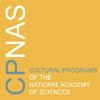From: Michael Sappol
Date: Tue, 13 Mar 2007 10:51:38 -0400
This may be stating the obvious but I want to offer an abstract, but I hope useful, response to the virtual symposium as a whole. Oron Catts's post about the unfriendly reception of his poster at an international tissue engineering conference raises the issue of the ambivalent relationship between artists and scientists, and their work. Without invoking the now-tired "two cultures" argument, it seems evident to me from many of the posts in this symposium that there are structural, and more than structural, similarities between artists and scientists: both make artifacts that are connected to truth claims; both do their work in sequestered spaces (the laboratory, the classroom, the studio, the gallery, the journal); both derive authority and legitimacy, cultural privilege, from claims to be connected to progressive lineages of accomplishment, with chronologies of "landmarks" and "breakthroughs"; both have a canon of performance based on the notion of "genius"; both increasingly use a specialized technical vocabulary that excludes the larger public; both have knowledge communities that assess, comment on, and validate their claims (and both share a knowledge community, the group of people who do sociological/cultural theory/critique of art and science). And both have transformative effects on a wider public, on society and culture, on everyday life, on the embodied self.
Although some of the posts in this symposium have stressed the ways in which artists and scientists collude, and have colluded over the centuries, it seems to me that there is a competition for authority, an abiding tension. Today, the cultural prestige of science is very high, hegemonic; for a long time science has trumped art. Artists have responded in part by adopting the language of "experimentalism" and the "laboratory", first in music, then in conceptual and visual art; by working in new technologies (video, digital imaging, tissue engineering, recombinant DNA); by taking up residence in the institutions of science; by adopting at least in part the specialized technical vocabulary of science; by making "epistemic objects" that mimic or parody or "destabilize" the objects of science; and by taking on an oracular, prophetic role that offers a critique of science, especially biotechnology. In other words, artists have responded by making themselves into scientists and philosophers of science. Who make far-reaching truth claims about science and technology: about the way science works; about the power relations that are built into science's "epistemic objects"; about the mystification, reification, and/or naturalization effects of scientific productions; about science's embedded ideologies and aesthetics; about its cognitive, and much more than cognitive, effects on us and the world around us.
Mike Sappol
History of Medicine Division
National Library of Medicine
to post a response, click on the "comment" button below
to return to the main page, to go www.visualcultureandbioscience.org
Subscribe to:
Post Comments (Atom)

1 comment:
Thank you for the opportunity to post a question to this virtual symposium. As I have read these conversation threads, I am struck that little has been mentioned about artistic representation of ‘mind, emotion, behavior’. As neuro-biology continues to understand the layers of the mind, where is the art that bridges this science domain with such an important social issue?
Where is the forum for artists who bridge the evolving neuro-science, molecular signalling of emotions, affect regulation, social sciences, psychology, etc with the vast domain of mind, emotion, behavior, mental health, trauma, self regulation, etc. Anything being done at the National Institue for Mental Health?
Historically, media, film, advertising and entertainment have touched these areas with some influence from academia and science.
As the human form is a genetic genotype expressed within a social environment, I see a huge gap in art. Where is the art of our internal emotional, mental, behavioral states that dance poetically in social neuro-science and with the environment? It could be called many names ‘mind-body art’, ‘mental health art’, 'social neuro-science' art.
Medical students are given illustrations and animations of anatomy and physiology from an allopathic framework. I see that illustrations and animations for the domain of mind, internal subjective states, and inter-subjectivity are notably under-developed.
Art can help society learn, heal and transform - where is this mind-body domain of art?
Would you please comment on this, and offer suggestions for forums to connect with others on this topic.
Regards,
Daniel Lappin
First Currency Sciences
Mill Valley, CA
Post a Comment